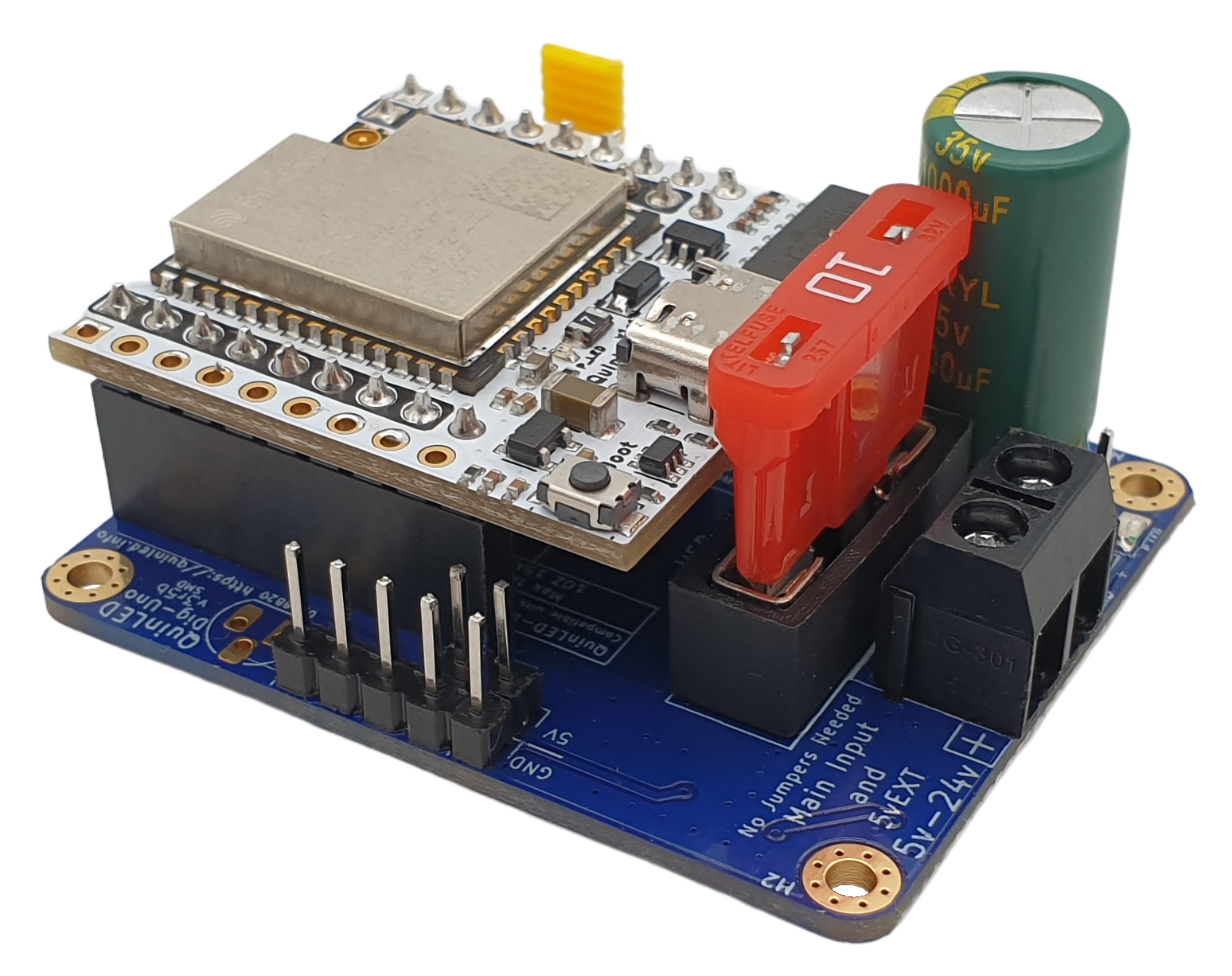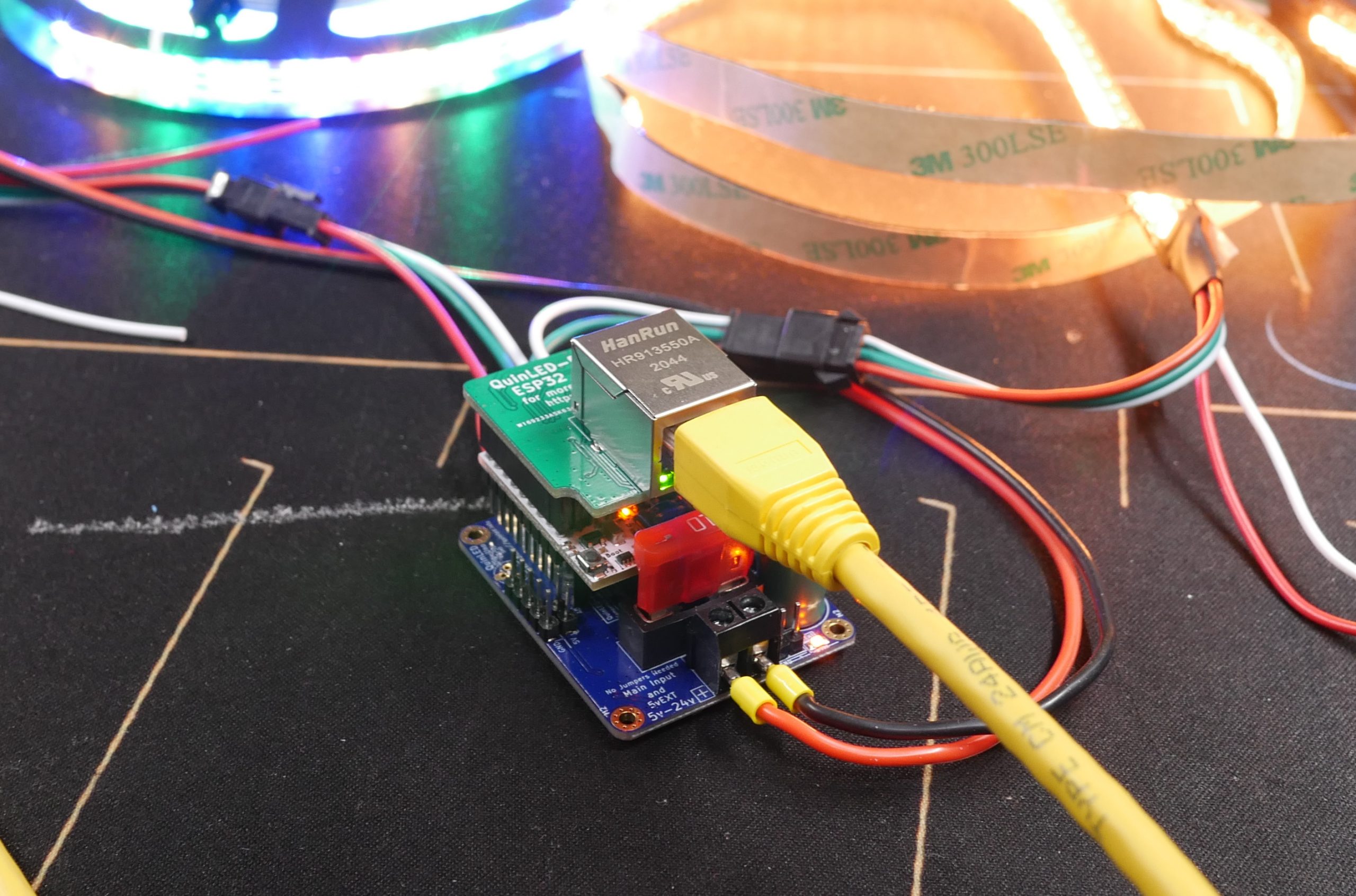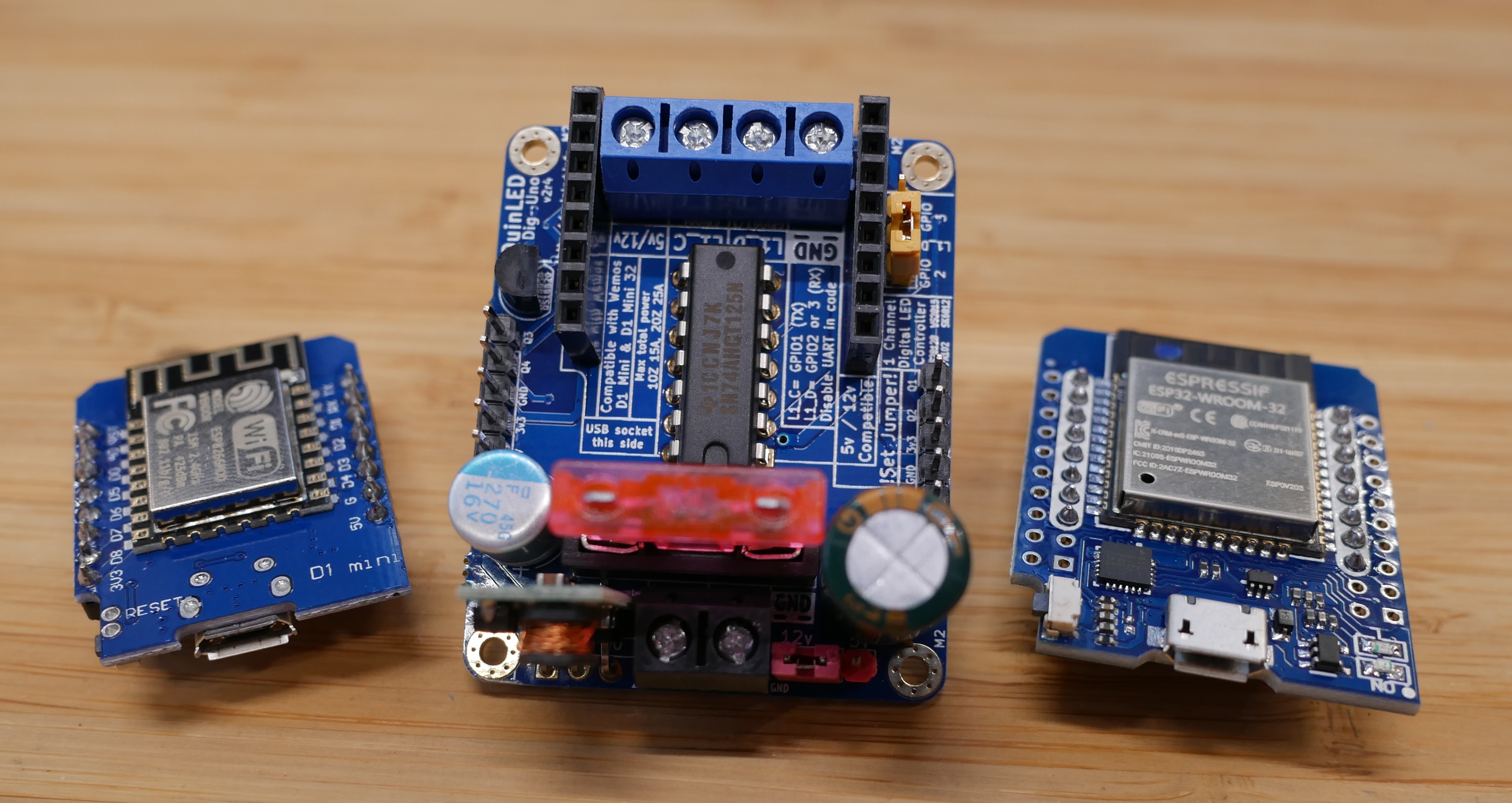QuinLED-Dig-Uno
Back to Addressable LEDs section
The QuinLED-Dig-Uno is a Digital LED controller which uses an ESP32 to control Digitally Addressable LED strips but adds a lot of features in a very compact form factor such as screw input and output terminals, high board power handling, onboard fuse, reverse polarity protection circuit, level-shifters and more functionality to make running digital LEDs as easy as possible! Other unique features are the QuinLED-ESP32 which can be purchased with a board antenna, external or wired Ethernet option!
The board is perfect for driving 2 (the board 2 individual data outputs) ws2812b “neopixel”, ws2811, sk6812, TM1814 or other type of 5v, 12v or 24v addressable LED strip!
The board is supported in the current versions of WLED and ESPixelstick or anything else that runs on an ESP32!
Board Article Index
Of the QuinLED-Dig-Uno there is a DIY version (you buy the components and build it yourself) and a Pre-Assembled version. Each differ slightly in function so below sections will be divided. Some articles might seem double or the same because of it!
Pre-Assembled version
Pre-Assembled boards for sale, click here!
- QuinLED-Dig-Uno pre-assembled specifications (Single/Dual channel digital LED controller)
DIY version
v3 released
- QuinLED-Dig-Uno DIY specifications (Single/Dual channel digital LED controller)
Shared articles
- QuinLED-Dig-Uno QuinLED WLED Installer
- QuinLED-Dig-Uno Pinout guide
- QuinLED-Dig-Uno Wiring guide
- QuinLED-Dig-Uno Board Dimensions
- QuinLED-Dig-Uno Using a Relay to turn off LED power completely
- QuinLED-Dig-Uno Configuration examples
- For v2 – Adding 24v Compatability (old, not needed for current DIY v3!)
DIY and Pre-Assembled versions, which one is right for you?
There are 2 versions of the QuinLED-Dig-Uno, the DIY version you build yourself and the pre-assembled version you get fully ready to go including pre-flashed with the newest available version of WLED! That way you can just screw in the cables and get started, no soldering required!
The Pre-Assembled version also adds a few features above the DIY version such as an individual level-shifter per output channel and the custom DC-DC circuit which accepts 5v-24v in for both main power and 5vEXT power allowing for even easier configuration vs the DIY version without the need of jumpers!
Which version is right for you I can’t decide. But generally if you find it fun to build and/or want the cheapest version possible (using Aliexpress components) the DIY could be right for you. But if time is more valuable to you then money or just need something that works the pre-assembled version is likely better for you.




